Get PeakVisor App
Sign In
Search by GPS coordinates
- Latitude
- ° ' ''
- Longitude
- ° ' ''
- Units of Length

Yes
Cancel
Share ×

Scan the QR code and open PeakVisor on your phone
❤ Wishlist ×
Choose
Delete
One of the best-preserved primeval forests in Europe is the breathtaking Primeval Forest Perućica. This heavily protected reserve is located in southeastern Bosnia and Herzegovina, right on the country’s border with neighboring Montenegro. There are 8 named mountains in Primeval Forest Perućica. Maglić (2,386 m/ 7,828 ft) is the highest point in the reserve, while the most prominent mountain is Jelovac (1,426 m/4,678 ft).
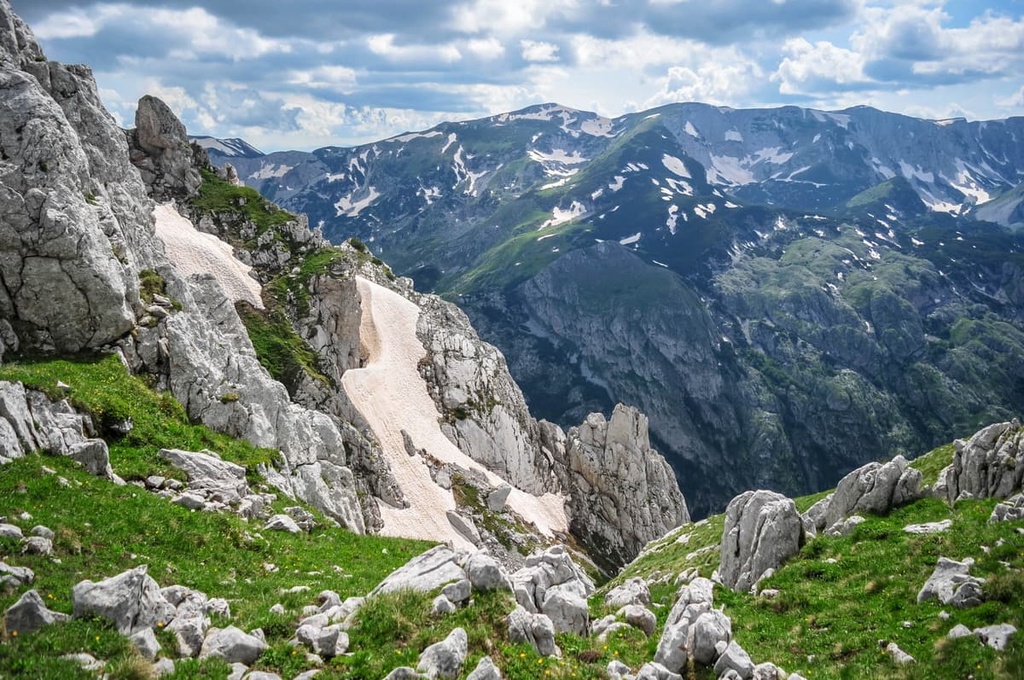
Primeval Forest Perućica is a protected nature reserve located within Sutjeska National Park, the most important natural site in Bosnia and Herzegovina. It was founded in 1962 and it covers an area of 17,250 ha (42,625 ha). The Sutjeska National Park Administration manages the Primeval Forest Perućica.
Sutjeska National Park is Bosnia's oldest national park, and it is known for its mountains and lush greenery. The country's highest peak, Maglić (2,386 m/ 7,828 ft), is also located inside the national park and the primeval forest along the international border with Montenegro.
The park is also famous for being the site of the Battle of Sutjeska, which took place in 1943 during World War II. But all of these important historical and natural heritage sites are nothing compared to the beauty of Primeval Forest Perućica.
Geographically speaking, the forest reserve lies in Bosnia and Herzegovina, near the border with Montenegro. The forest is part of the Maglić massif and the Dinaric Alps. It covers an area of 1,400 ha (3,459 acres), and the only official entrance to the park is at Dragoš Sedlo. The forest itself is 6 km (3 mi) long and up to 3 km (1.8 mi) wide.
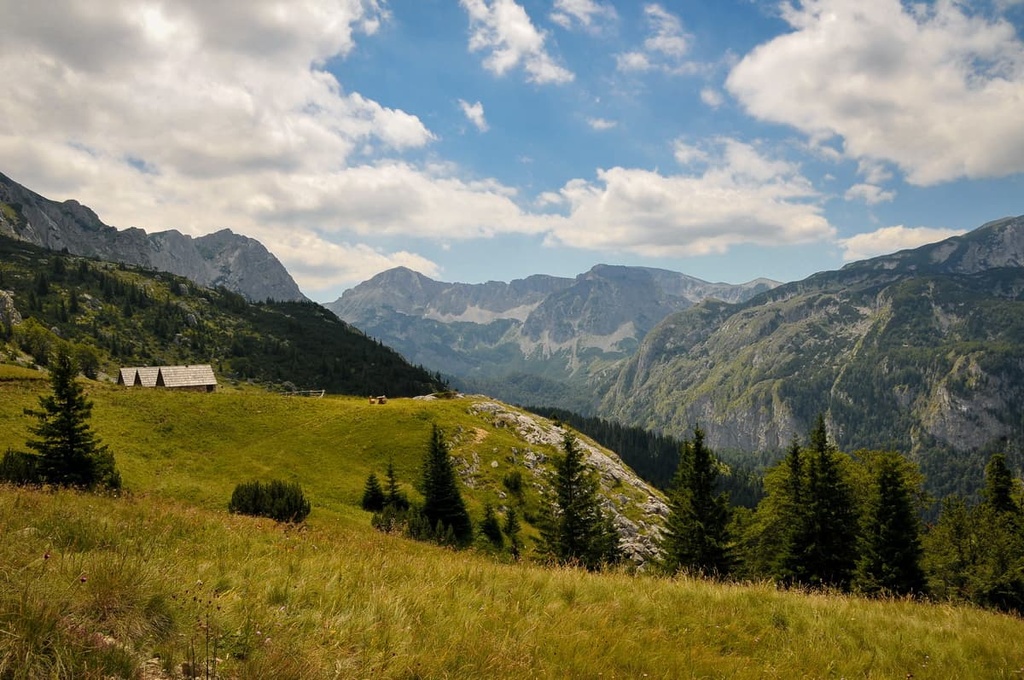
Perućica falls under the Strict Nature Reserve protection scheme since it is one of Europe's last remaining primeval forests. But what is a primeval forest? A primeval forest is a type of forest that has attained great age without significant disturbance. Most primeval forests are at least 1,000 years old, but individual trees in these forests may be much older.
These ancient forests are among the most pristine examples of nature in Europe. They provide the clearest possible picture of how Earth's ecosystems used to function in the region before humans started cultivating them. These resources are vital to our society because they provide oxygen for life on land and because they are home to numerous species of flora and fauna.
Perućica is the largest and oldest forest in the region of Bosnia and Herzegovina. It has many trees that are over 300 years old. The age of the forest itself is estimated to be around 20,000 years, which means that it existed throughout the last glacial maximum. This forest is home to a wide variety of trees and it is still largely undisturbed by humans and animals alike. There are trees in the forest that are over 50 m (164 ft) tall.
Primeval Forest Perućica is one of the most beautiful places in Bosnia and Herzegovina. It's a protected area that’s home to many animals, plants, and birds. This natural habitat is one of the reasons why this place has been so popular with tourists over the past few decades.
One of the most popular places in Primeval Forest Perućica is the Skakavac Waterfall. It's around 70 m (229 ft) tall and breathtakingly beautiful. What else would one expect from a waterfall located in a primeval forest?
As Peručica is one of the last untouched forest areas in Europe, it offers unique opportunities for researchers to study the importance of natural environments. In fact, it is considered to be one of the last European “oxygen factories,” though it is not as big as some other sources of oxygen production on the planet like the rainforests of the Amazon in Brazil.
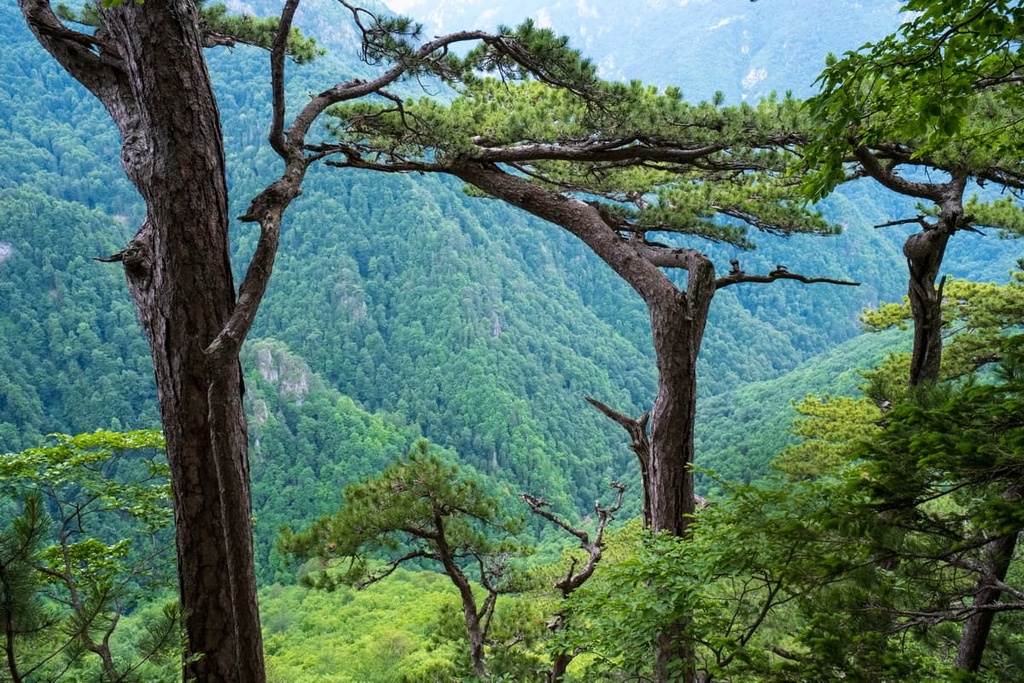
Peručica is a unique place to study how the forests in Europe are losing their ability to store carbon since it is one of the last untouched forests on the continent. In 1954, the local government declared the forest to be a strictly protected part of nature that is to be used only for scientific and educational purposes. The rainforest is home to countless animals, and proclaiming it a protected area was crucial for protecting many endangered species.
Primeval Forest Perućica was placed under the protection of the state and proclaimed a natural reserve in 1954. The park is now home to hundreds of endemic plant species and is a treasure trove of geological history. UNESCO lists Perućica forest as “never fully explored” and is considered one of the most important forests in Europe. That being said, one can only visit the forest on an organized trip with Sutjeska National Park rangers.
The flow of the Sutjeska River is what shaped the topography of Sutjeska National Park and the Primeval Forest Perućica. The name of the Sutjeska River translates to ‘location where rivers meet.’
Although the Primeval Forest Perućica is, indeed, a forest, its geomorphology is important to the overall landscape in the region. Faults and major geologic formations are visible in the forest, and most of them trend from the southeast to the northwest, just like in the rest of the Dinaric Alps.
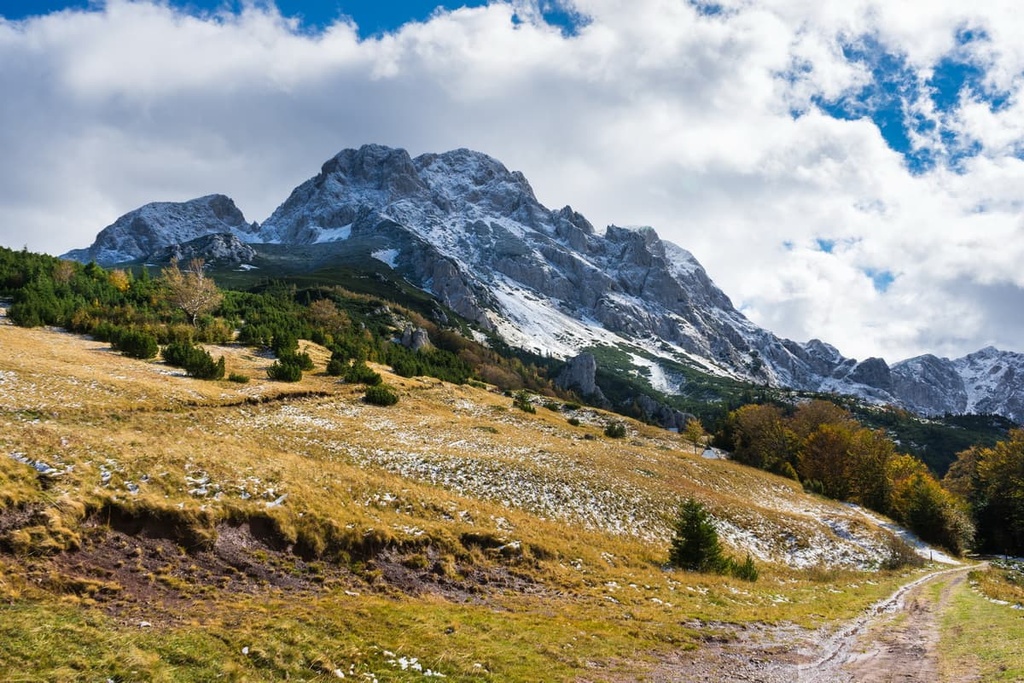
Sutjeska National Park contains parts of the Maglić, Volujak, Bioč, and Zelengora massifs. Meanwhile, the Primeval Forest Perućica lies between the Maglić and Zelengora massifs.
The bedrock in the forest primarily consists of limestones and dolomites. These rocks are sedimentary in origin and they contain high levels of calcium and magnesium carbonates. The region is also known for its karst formations, which are common in areas that have large areas of limestone and dolomite in their bedrock.
In areas dominated by karst formations, like what’s found in the Primeval Forest Perućica, the erosive power of water is responsible for creating much of the region's topography. Many of the valleys, caves, and sinkholes in such regions were created by surface water runoff, springs, and rivers.
One of the most notable areas in the Primeval Forest Perućica is the Skakavac Waterfall. Skakavac (which translates to ‘grasshopper’) is one of the many waterfalls in Bosnia and Herzegovina. It is around 70 to 75 m (229 ft and 246 ft) high, though estimates of its height vary depending on the source. The waterfall formed from the Perućica creek, which cuts through Perućica forest and descends the Maglić massif.
Some of the highest peaks located inside the primeval forest include:
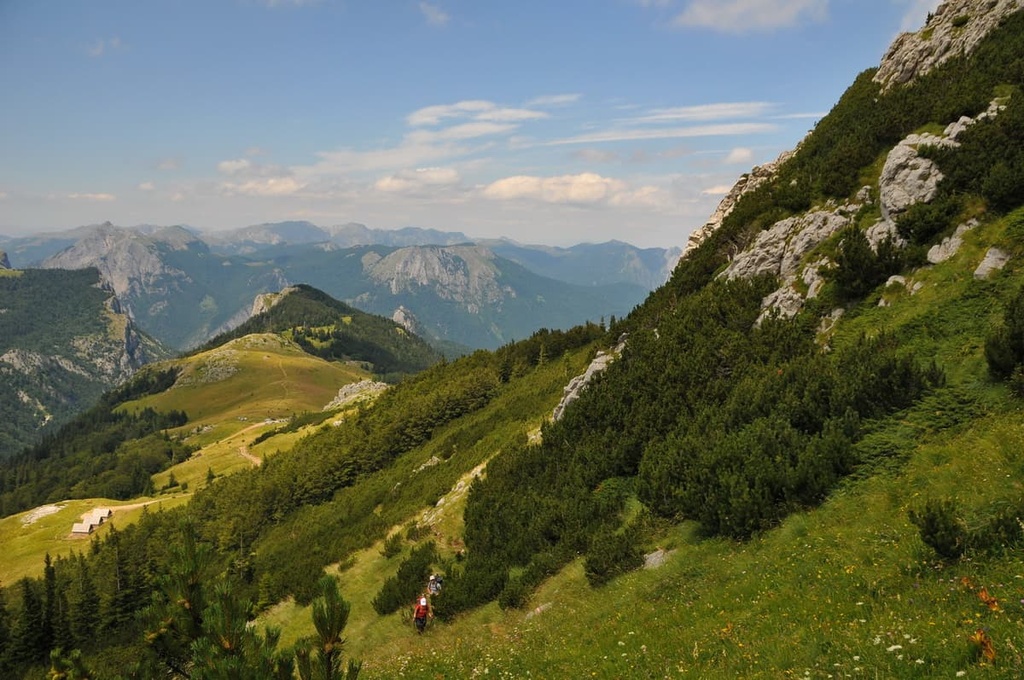
The diversity of flora and fauna in the region was one of the main reasons for establishing National Park Sutjeska. The park is one of the most popular attractions in the country because it offers diversity in both flora and fauna as well as breathtaking views. It is part of the South-Eastern European mixed forests and Southeastern Conifer Forests ecoregions.
Perućica is home to rich plant life, which is apparent in how many different species there are in the forest alone. Researchers have registered more than 1,000 tree and shrub species in the forest as well as over 170 herbaceous plant species.
Research in this area has found a high level of endemism. In fact, researchers estimate that there are around 2,600 different species of both flora and fauna that are endemic to the region. These species are found in both wild and managed environments and include plants, fish, birds, mammals, reptiles, amphibians, and invertebrates.
This area is home to over 330 native plant species, including Pančićeva omorika or Pančić spruce, which is in danger of extinction. Scientists consider this tree to be a relic of the Tertiary period. Scientists think of the tree species as a living fossil, and Perućica is one of the few remaining places where it currently grows in the wild.
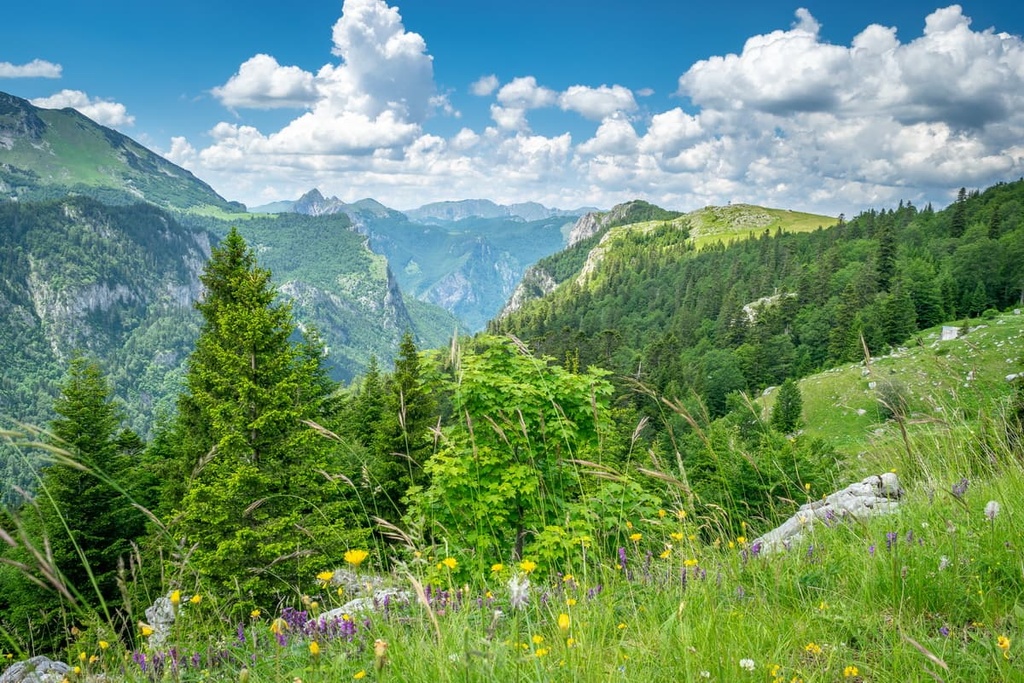
The rarest endemic species in Perućica Primeval Forest include Sutjeska's rockbell (Edranianthus sutjeskae), Daphne malyana, Cardamine maglićensis, and Hieracium naegelianum. Other notable species found in the forest include western capercaillie (Tetrao urogallus), hazel grouse (Tetrastes bonaria), and rock partridge (Alectoris graeca).
The fauna in the park is quite diverse. A few of the many mammal species that inhabit the forest include chamois (Rupicarpa rupicarpa), roe deer (Carpeolus carpeolus), wild boars (Sus scrofa), brown bears (Ursus arctos), gray wolves (Canis lupus), and red foxes (Vulpes vulpes).
The history of Primeval Forest Perućica began 20,000 years ago when the forest started growing into its current form. In fact, it never stopped, and we can still see relics from the Tertiary period thriving in the forest to this day. Some trees found in the forest are around 300 years old, including one of the tallest spruces ever measured—an individual that was 63 m (206 ft) high.
In prehistory, an Illyrian tribe called the Autariatae lived in what is now the primeval forest. Soon, the area was taken over by the Roman Empire and managed as part of the province of Illyricum.
With the fall of Rome came the first local medieval kingdoms. The area of Sutjeska was, at different points in history, part of a number of empires and kingdoms such as those of what is now Bosnia, Serbia, and Montenegro (called Zeta).

With the Ottomans came a new unified occupation for all three kingdoms. However, there don’t appear to have been any permanent human settlements in the Sutjeska area during this time.
Sutjeska was the site of a critical battle during World War II. The Battle of Sutjeska was fought between the Yugoslav Partisans and the Axis forces in September 1943 below the Zelengora massif and on the Sutjeska plain. The Sutjeska monument, a famous architectural achievement, still stands in tribute to the 3,300 soldiers from both sides who died in the battle.
Luckily for conservationists, humans never truly settled throughout the primeval forest. According to many local tales, the wildness of the forest has also claimed many lives over the millennia. One legend tells of a garrison of German Special Forces that got lost in the forest during the Second World War and was never heard of again.
Formal protection of the area started in 1893. The Austrian-Hungarian Empire began protecting the forest around 1893. During this time, the government prohibited hunting in the area.
This was the first attempt at protecting nature in Bosnia and Herzegovina. However, conservation in the region as we know it today arguably began at the end of the nineteenth century, which is when locals built facilities that are still in use today.
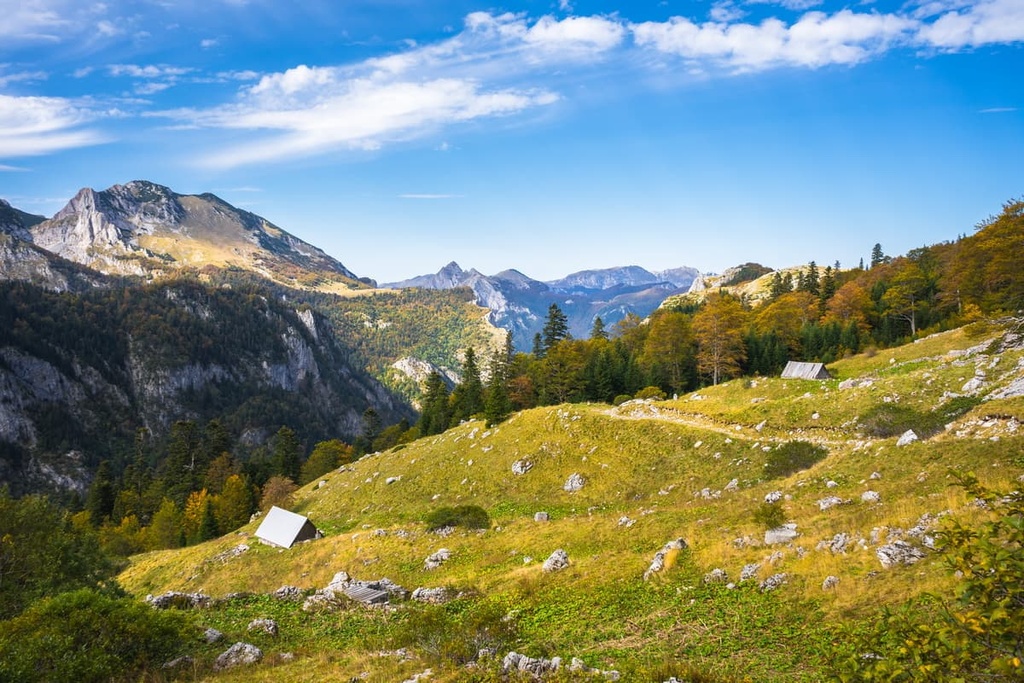
Around this time, locals began strictly protecting this area of Perućica, and they worked hard in order to conserve it. The first attempts to conserve the area took place in the 1950s when locals started working on the roads in the region. Primeval Forest Perućica was proclaimed a nature reserve in 1954. A national park was established in the Sutjeska area soon afterward on January 13, 1962.
The Primeval Forest Perućica and its surrounding area are home to an excellent collection of hikes and other opportunities for outdoor recreation. Here are some of the best trails in Primeval Forest Perućica to check out during your next trip to the region.
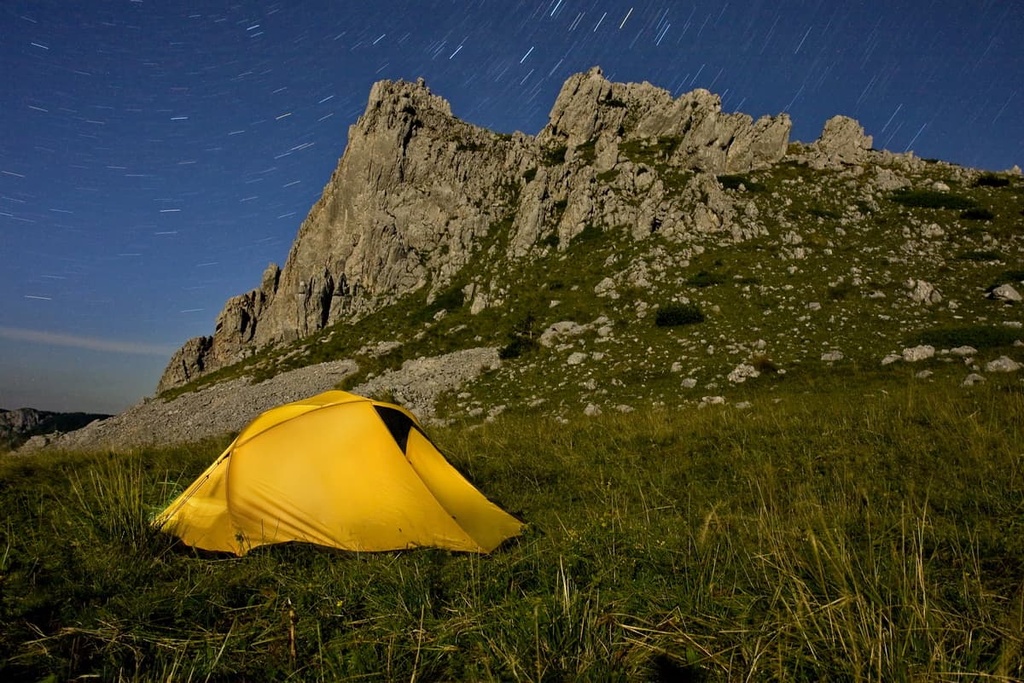
Maglić is the highest mountain in Bosnia and Herzegovina. It lies in the southeastern part of the country near Foč and on the border with Montenegro. The most common way to reach Maglić is by hiking through the beautiful nature reserve in Sutjeska. However, one can also reach it by hiking up Maglić's southern slope from Montenegro.
When hiking to the peak of Maglić, you can enter the park area via Dragoš Sedlo. From here, you can then follow the road on the border of Primeval Forest Perućica. When you reach Prijevor below Maglić's peak, you will follow a steep road to the top.
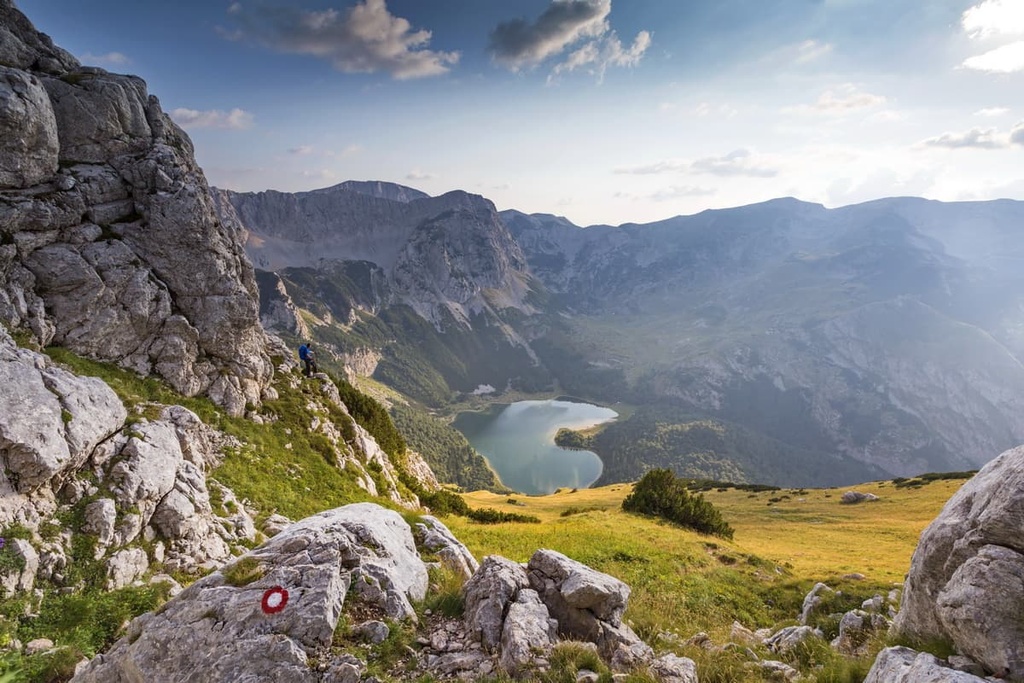
Keep in mind that this hike takes most people a whole day to complete. Additionally, you should expect fog on the route since even the name of the mountain translates literally as ‘foggy place.’
The trail to the Skakavac Waterfall is a strenuous hike that takes you from the entrance of Dragoš Sedlo into the center of Primeval Forest Perućica. The hike has an elevation gain of 400 m (1,312 ft) and it travels to the base of the Skakavac Waterfall.
However, anyone interested in this hike should know that you must be accompanied by a ranger in order to access the waterfall. This trail is not marked and there is a high likelihood of encountering wildlife in the region, so a guide is a must for all visits to the area.
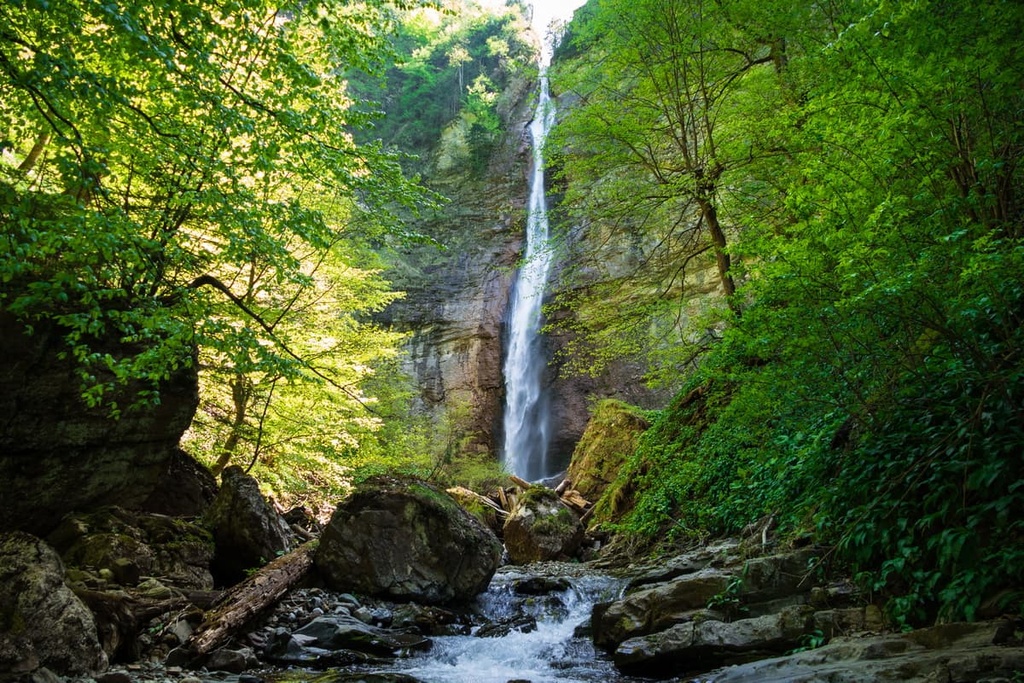
The hike itself is exceptionally scenic since it passes through the heart of the primeval forest. Hikers on this trail can enjoy lush green forests and numerous views of the Zelengora massif in the background.
The trail to Prijevor is another popular winter and summer hike. It takes you from Suha to Prijevor, which is located below the peak of the Maglić massif. The hike is 8 km (5 mi) long and has an elevation gain of around 1,000 m (3,280 ft).
The trailhead for this hike is located near the river Suha. From here, the trail leads you through a beautiful forest, just on the outskirts of the Primeval Forest Perućica. Then, you’ll ascend the lush green fields of the Maglić massif until you reach Prijevor.
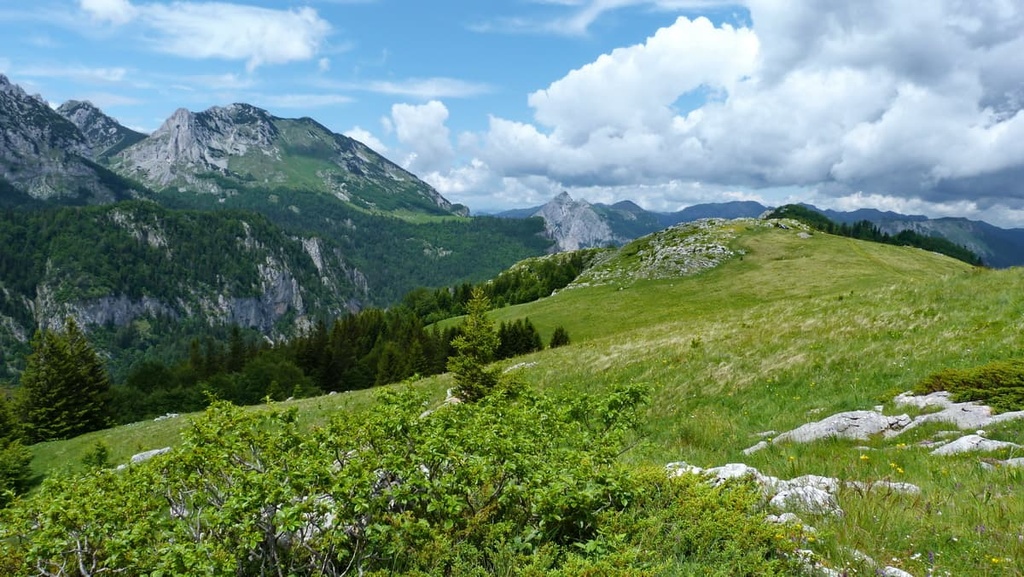
The Primeval Forest Perućica is located near Bosnia's border with Montenegro. At just 35 km (21 mi) away, Foča is the closest town in Bosnia and Herzegovina to the forest. With that in mind, here are some of the best places to stay during your next adventure in the Primeval Forest Perućica.
Foča is a city in Bosnia and Herzegovina. The city has a population of around 12,000 people, and it was founded in 1878 by the Austro-Hungarian Empire as part of its military campaign against the Ottoman Empire.
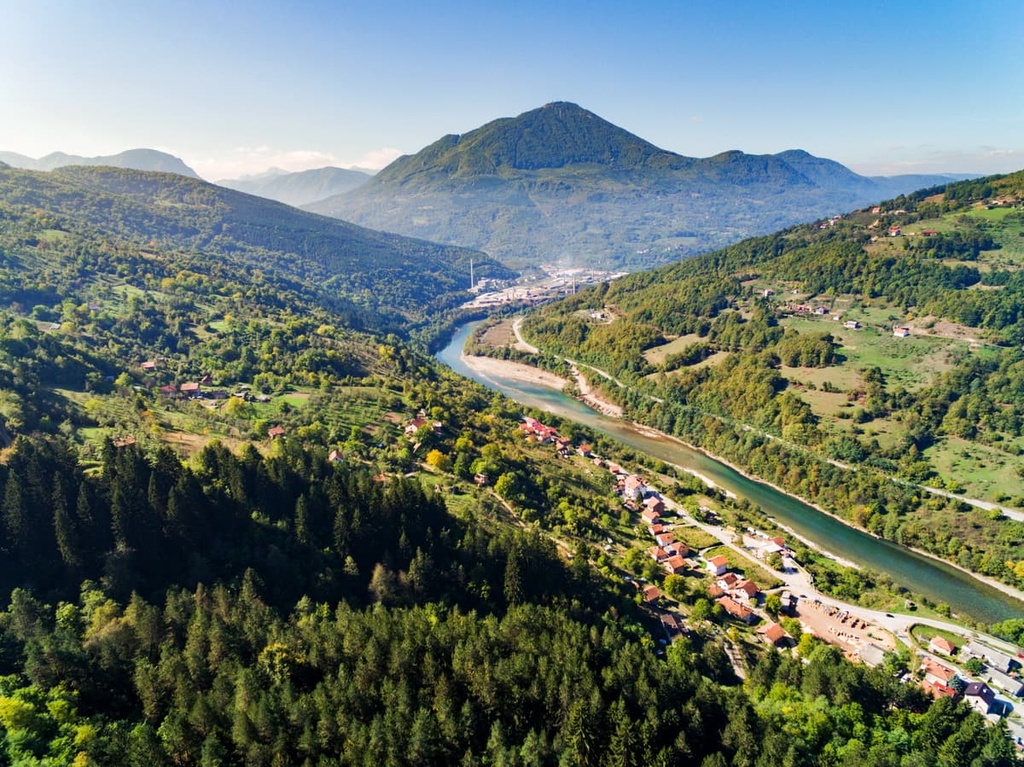
Foča was heavily damaged during the Yugoslavian War, but locals rebuilt it, and it has since become an important industrial center for Bosnia and Herzegovina. There are three rivers in the city—Drina, Tara, and Čehotina—all of which are popular for rafting. The most popular places to stay in the city are bungalows and campsites, and most people travel to Foča by car or bus.
Trebinje is a city in Bosnia and Herzegovina. The city has a population of about 30,000 people, and it lies on the banks of the river Trebišnjica. Trebinje has a rich history that dates back to Roman times.
It was established as a Roman colony in 27 BCE by Emperor Tiberius. Trebinje was part of the province of Illyria, and it was inhabited by the Illyrians, Celts, and Romans at various times throughout history. Nowadays, one can reach Trebinje by road, and, in the city, you can find numerous luxury hotels and other accommodation options.
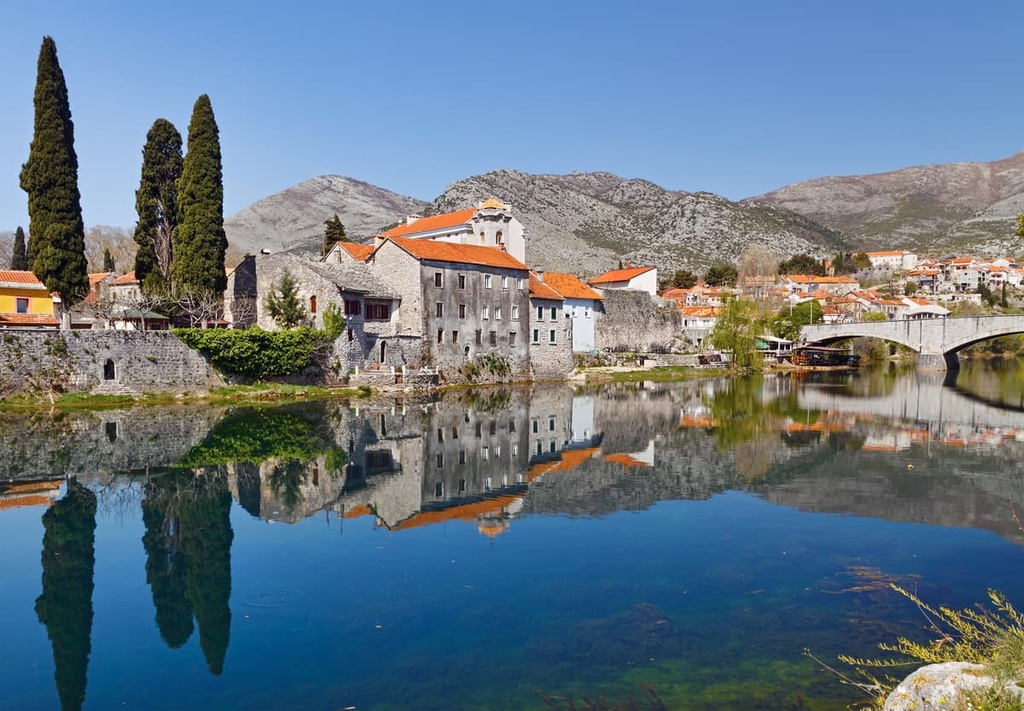
Sarajevo is the capital and largest city of Bosnia and Herzegovina. It is also the center of the country's multi-ethnic and multi-cultural life.
For centuries, Sarajevo has been one of southeastern Europe's cultural, intellectual, and political centers. The city has been home to many great thinkers, writers, philosophers, musicians, scientists, artists, architects, athletes, and politicians over the years.
Visitors to Sarajevo can enjoy the city’s many art galleries, museums, and festivals. There are countless accommodation options to choose from in Sarajevo, and you can get to the city by air, rail, or road.
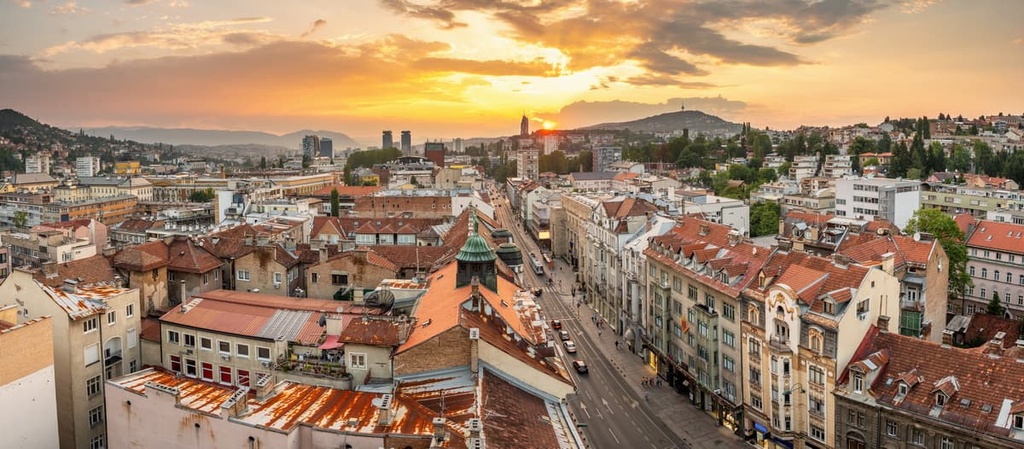
Explore Primeval Forest Perućica with the PeakVisor 3D Map and identify its summits.








